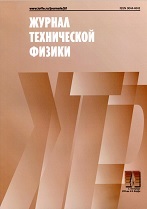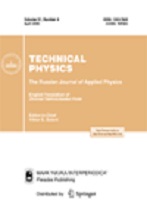|
This article is cited in 4 scientific papers (total in 4 papers)
Physical science of materials
Silicon monoxide carbonized by fluorocarbon as a composite material for anodes of lithium-ion batteries
D. A. Lozhkina, E. V. Astrova, A. I. Lihachev, A. V. Parfeneva, A. M. Rumyantsev, A. N. Smirnov, V. P. Ulin
Ioffe Institute, St. Petersburg
Abstract:
Disperse composite materials based on silicon monoxide and carbon (SiO/C) have been obtained by thermal treatment of a powder mixture consisting of 40 wt.% SiO and 60 wt.% CF$_{0.8}$. Annealing has been performed in the argon atmosphere at temperatures 1000 – 1250$^\circ$C. It has been established using electron microscopy and Raman scattering that, at $T\ge$ 1100$^\circ$C, silicon carbide is formed in the solid-phase product, including in the form of nanowhiskers of cubic modification. Based on the data on the decrease of the reaction mixture weight, the composition of the formed products is calculated as a function of the annealing temperature. The anodes prepared from the composites obtained at a temperature above 1100$^\circ$C demonstrate a sharp decrease in the capacitance and in the Coulomb efficiency. It is shown that the observed changes are determined by an increase in the oxygen concentration in the matrix surrounding silicon precipitates, which have been formed as a result of SiO disproportionation, rather than by the formation of SiC. It is established that an optimal annealing temperature provides the highest values of the electrode capacitance, the Coulomb efficiency of the first cycle, and the ability to operate at high current densities is $T$ = 1050$^\circ$C.
Keywords:
silicon monoxide, carbonization, silicon carbide whiskers, anodes for lithium-ion batteries.
Received: 26.03.2021
Revised: 23.04.2021
Accepted: 24.04.2021
Citation:
D. A. Lozhkina, E. V. Astrova, A. I. Lihachev, A. V. Parfeneva, A. M. Rumyantsev, A. N. Smirnov, V. P. Ulin, “Silicon monoxide carbonized by fluorocarbon as a composite material for anodes of lithium-ion batteries”, Zhurnal Tekhnicheskoi Fiziki, 91:9 (2021), 1381–1392; Tech. Phys., 66:11 (2021), 1228–1240
Linking options:
https://www.mathnet.ru/eng/jtf4942 https://www.mathnet.ru/eng/jtf/v91/i9/p1381
|


| Statistics & downloads: |
| Abstract page: | 59 | | Full-text PDF : | 29 |
|





 Contact us:
Contact us: Terms of Use
Terms of Use
 Registration to the website
Registration to the website Logotypes
Logotypes








 Citation in format
Citation in format 
